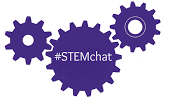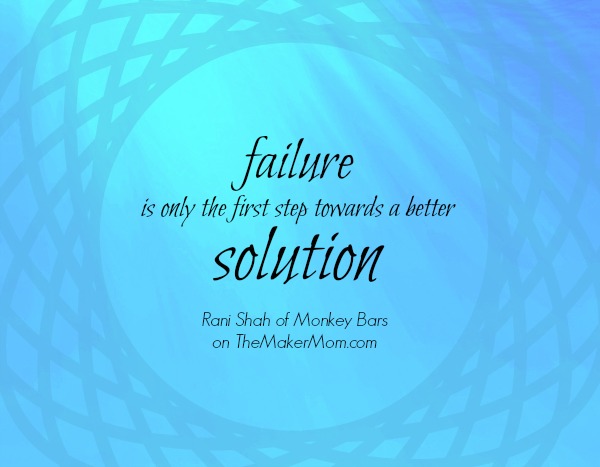Here’s are a few key tips along with helpful resources for anyone who wants to learn more about PBL STEM education.
Before I present the recap, I want to share an important post that IAT recently published on their blog. IAT co-founder, Laurie Kreindler cautioned parents and educators to be wary of educational publishers who are simply repackaging old programs with shiny new labels like STEM and PBL. There seems to be a lot of this going around.
Following that note, I want to remind you that the comments and links in the #STEMchat summary below are items that resonated with the #STEMchat participants and have not been officially vetted or approved by IAT. They sponsored and helped guide the discussion, but did not moderate the open exchange of ideas and opinions.
What is Project-Based Learning?
We started off discussing what PBL means to use as parents, educators and STEM professionals. One of the hallmarks of PBL in STEM is authenticity, solving real world problems as actual teams of scientists and engineers might do in their jobs. Inherent in that description the fact that students collaborate with one another as they identify problems and analyze data. PBL minimizes or eliminates busywork because the students have a meaningful goal. PBL in STEM includes a focus on communications skills and students present, and defend their conclusions to classmates.
PBL honors student voice and choice and haves them engage in authentic inquiry to learn content and skills.
PBL is “real deal’ of learning; creating authentic projects out of real world, giving kids experience that lights up their minds.
Students learn science & engineering practices & disciplinary core ideas in the context of working on projects.
Students may not love content but they can still love learning when it ties to real world experiences & passions.
Projects are the work, not just the small thing to do at the end of a unit.
Why PBL for STEM?
Building on the answers to the first question, STEMchatters talked about PBL going beyond college readiness and offering life and career skills. Here are a few other thoughts:
PBL helps eliminate the whole “Why do we learn this? We’ll never use it in real life!” complaint from students!
STEM is something you do. You can’t just read about each one and become great at it. You have to do it. PBL is perfect fit.
PBL allows natural differentiation. Easier to meet needs in a flexible project and challenge all kids.
STEM allows inquiry based hands on learning that will ultimately drive the project.
PBL for STEM is a way for younger kids to learn how the world is integrated and see that each subject is not a silo.
How is student learning assessed in PBL?
Deliverables throughout the project and formative assessments not only provide teacher with a way to keep up with work-in-progress, but these assessments also help students stay on track. Summative assessments take place at the end of a project. Many Chatters stressed the need for both formative and summative assessments in PBL STEM education. Some educators use standards-based assessments and provide rubrics based on science and engineering practices. See the links below to learn more about both of these.
PBL assessments focus on 21st century skills like creativity, collaboration, critical thinking, and communication in addition to students’ content knowledge. Blogging can be a great way for students to reflect on the process. Students may also provide project summaries and explanations via blogs or other online tools.
At the culmination of each project students are required to demonstrate their ability to use their newly acquired knowledge.
I use graphic organizers for students to brainstorm, record research, assess personalized learning, and plan final products
Students do final pitches in many of our programs, and often get to sell their products. Great assessment by way of validation!
What role does technology play in PBL? What is being used at your school?
I was glad to see that the educators on #STEMchat tended to view technology as a means, not an end.
Tech is a tool, like a pencil. But it has the power to amp up the creative possibilities to blow the roof off limits.
Remember technology is a TOOL for learning. It should enhance great instruction. It can’t replace it!
Tech is both a tool and a way to support projects. We use Google Drive for students to organize work.
I see tech not only as a creation tool, but a way to share the students’ projects with the world. Sharing the projects is crucial.
Tech has the power to connect kids with REAL experts. REAL videos. With the world.
Technology can be used to assess student learning in a project as well as manage the process.
I think flexible use of tech in PBL is good. Don’t rely on tech, use creativity and “analog” skills.
In Tech & Engineering classes, students learn how to code, make 3D animations, 3D designs, movies, etc. to use in w/projects.
As a parent, I’m also a fan of technology that help parents understand what’s happening in the classroom
How do informal programs like Genius Hour or Curiosity Projects support PBL?
Genius Hour and Curiosity Projects take place when teachers set aside a specific time each week (or day!) for students to identify and solve a problem they are passionate about. Some refer to this as “personal PBL.” It affirms students to know their passions matter, and that the passions of their classmates matter as well. Even better, such projects demand that students ask questions as they seek to improve the world around them and immerses them in the engineering design process in order to develop solutions.
Informal programs can also support students being more student driven, collaborative and critical thinkers
They have students dive deeper and find meaning of what they are investigating.
Genius hour is a chance to TRY, FAIL, MAKE MISTAKES. Exploration is paramount.
Genius Hour is great fit with PBL ideals. Let the kids create STEM projects THEY care about. They’ll never forget that lesson.
Genius hour can be particularly empowering to students who are non-traditional. For once their ideas and work are valued.
What are some great, free PBL resources for parent, students, educators?
STEMchatters really delivered on this one! Check out these resources to expand your knowledge of PBL. (See the links listed under the first question above for more even more information.)
Project-Based Learning Examples from YouTube
Andrew K. Miller website’s PBL resources
Camp Creek Blog: PBL for Homeschoolers
Creating Animation for PBS – in high school
How can parents reinforce PBL at home?
There was a resounding sentiment that parents can best help students in PBL by not doing the work for them. However, showing interest, asking questions (probing, challenging ones), and providing support (as well as a willingness to live with a bit of mess) are key. Logistical support in the form of organizational skills or tools and help with field trips or meetings related to your student’s topic of study is also important. Another popular idea was to provide out-of-school options for STEM and PBL through clubs and camps.
We must resist urge to rescue the kid in the midst of healthy learning struggle. Or they’ll never develop their own wings.
Make learning accessible, provide the outlet, and learn from mistakes.
Show kids the opportunities that come from STEM careers.
We need to help parents understand that it is not about the grade, but about the process of learning.
Parents should also serve as advocates at school and district level. Help teachers make connections to career and workforce.
Become comfortable with the idea of “less-than-perfect” and failure as long as your student is working hard.
How do schools prepare for PBL?
PBL doesn’t just happen. It’s a different teaching model and requires training. Schools considering a shift to PBL should “research, plan, visit schools with current PBL programs, plan some more, start small, and plan even more,” in the words of one STEMchatter. Many teachers commented that PBL is more than a curricular choice, it requires a change in classroom philosophy and possibly even a shift in school culture to succeed. In addition to the previous comment about starting small (which was echoed by several participants), it’s good to start out with volunteers who are eager early adopters and want PBL to succeed, even if their numbers are few.




